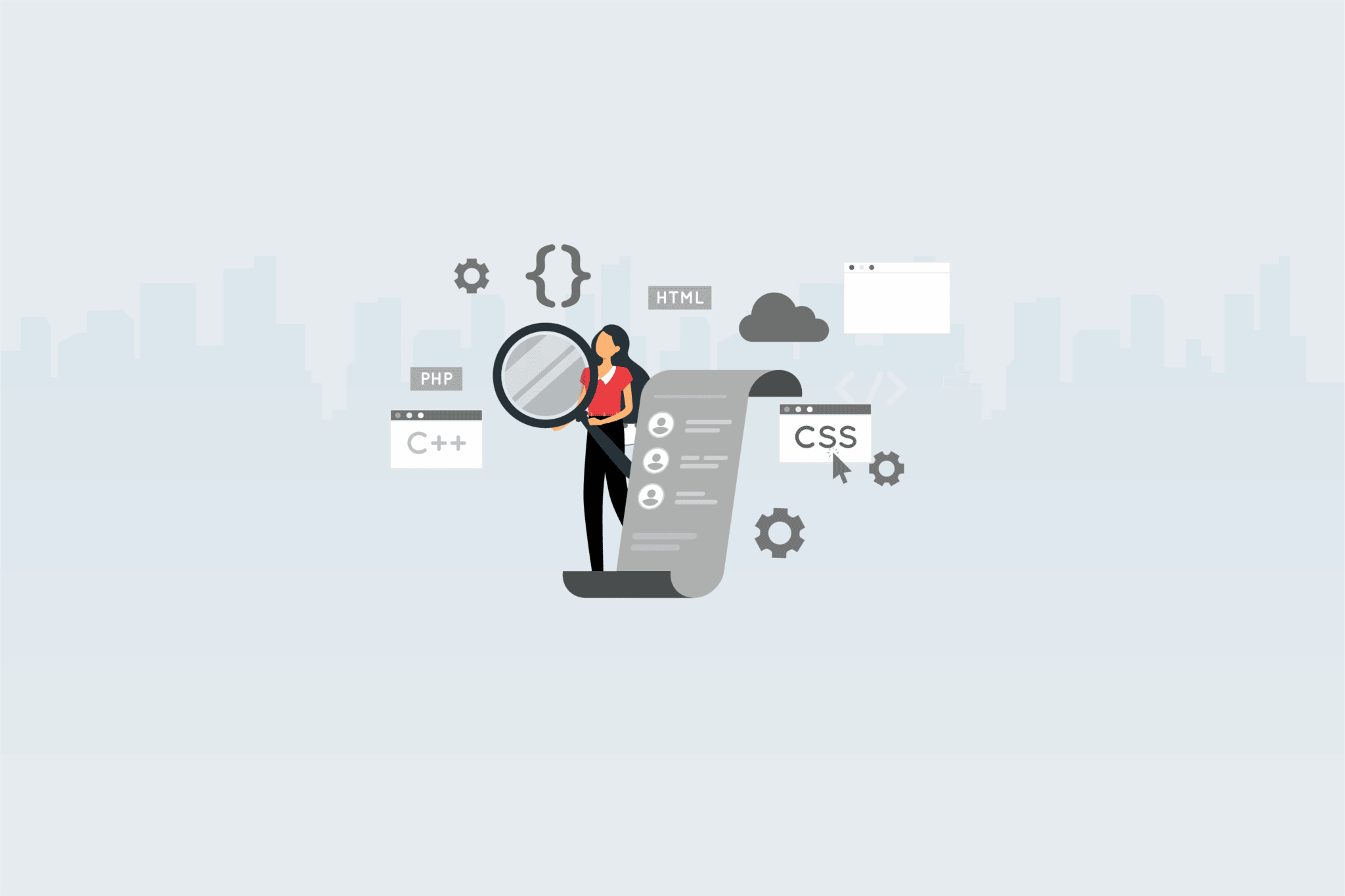In the intricate web of modern business operations, the sourcing process stands as a pivotal mechanism that can make or break an organization’s success. The journey of acquiring essential goods and services goes beyond mere transactions; it involves a strategic approach to identify needs, evaluate suppliers, negotiate terms, and establish enduring relationships.
Implement a comprehensive sourcing plan that includes market research, supplier evaluation, and risk assessment. A study by Procurement Leaders suggests that a well-structured process can reduce sourcing cycle times by up to 30%.
In this article, we delve into the core intricacies of the sourcing process and shed light on how adeptly managing this process can lead to streamlined operations, enhanced value, and sustainable growth.
Identifying sourcing needs and requirements
In the intricate dance of the sourcing process, the foremost step is to identify the specific needs and requirements of the organization meticulously. This initial phase forms the bedrock upon which the entire process is built, determining the direction and efficacy of subsequent actions. A thorough understanding of what is needed – whether it’s raw materials, components, services, or products – is crucial to avoid misalignment and waste.
To manage the sourcing process adeptly, businesses must engage in a comprehensive internal assessment. This involves collaborating across departments to ascertain the exact nature and quantity of the required resources. This step mitigates the risks associated with overspending or procuring surplus items, thus ensuring that the sourcing efforts are targeted and cost-effective.
Furthermore, technological advancements have considerably eased this phase. Digital tools and analytics provide insights that aid in accurate demand forecasting, trend analysis, and market intelligence. These data-driven approaches enable organizations to make informed decisions, minimizing errors and optimizing the entire sourcing process.
The identification of sourcing requirements also encompasses setting quality standards and compliance guidelines. These standards serve as benchmarks for evaluating potential suppliers, ensuring that the sourced items meet the necessary criteria and align with the organization’s overall goals. By defining these requirements early on, businesses streamline supplier evaluation, fostering a more efficient and focused sourcing process.
The second step of the sourcing process is akin to laying the foundation of a sturdy structure. Without a clear understanding of sourcing needs and requirements, the subsequent stages can lack direction and coherence. Therefore, adeptly managing this phase is imperative to orchestrate a sourcing process that flows seamlessly, meets organizational objectives, and contributes to the long-term success of the enterprise.
Supplier identification and selection
Navigating the intricate landscape of supplier identification and selection is a pivotal phase in the sourcing process. Once the organization’s needs and requirements are crystal clear, the task of finding and partnering with the right suppliers takes center stage. This step involves a delicate balance of strategic evaluation and relationship building to ensure the seamless flow of resources.
To manage the sourcing process effectively, businesses need to cast a wide net in supplier discovery. This entails researching potential suppliers, both within and outside existing networks, to uncover a spectrum of options. This diversity allows for a comprehensive evaluation that considers factors such as price, quality, reliability, and proximity. The goal is to identify suppliers who align not only with immediate needs but also with the long-term vision of the organization.
The selection process extends beyond the quantitative realm. A critical element involves assessing the cultural fit and values alignment between the organization and the potential suppliers. A shared commitment to ethical practices, sustainability, and innovation can foster a stronger partnership that transcends transactional relationships.
Negotiations also play a pivotal role in this phase. Adeptly managing discussions over pricing, terms, and conditions requires a delicate blend of assertiveness and collaboration. The goal is to arrive at a mutually beneficial agreement that creates value for both parties involved.
In essence, supplier identification and selection is a careful dance of due diligence and discernment. The chosen suppliers become more than mere vendors; they become partners in the organization’s journey. By masterfully managing this phase of the sourcing process, businesses can secure reliable sources of materials and services while building alliances that contribute to the overall growth and success of the enterprise.
Request for proposals (RFPs) and negotiations
In the intricate orchestration of the sourcing process, the stage of Request for Proposals (RFPs) and negotiations emerges as a crucial interlude. This phase is characterized by the formal solicitation of bids from potential suppliers, followed by a nuanced dance of negotiation to arrive at terms that align with the organization’s objectives.
Effectively managing this step requires the finesse of a skilled negotiator and the clarity of a strategic thinker. The RFP serves as a structured invitation to suppliers, outlining the organization’s needs, expectations, and evaluation criteria. A well-crafted RFP sets the stage for transparent competition, ensuring that potential suppliers understand the requirements and can submit informed bids.
The evaluation of received proposals demands meticulous attention. Each proposal is scrutinized against predefined criteria to determine the supplier’s compatibility with the organization’s needs and values. This process goes beyond mere cost consideration, delving into factors such as quality, delivery timelines, and technological capabilities.
Subsequent negotiations are the crux of this phase. Here, the art of compromise meets the pursuit of mutual benefit. Negotiations encompass a delicate balance of asserting the organization’s interests while acknowledging the supplier’s constraints. Successful negotiation results in terms that optimize value and mitigate risks for both parties.
Modern technology has revolutionized this phase, enabling digital collaboration and real-time communication. Video conferencing, collaborative platforms, and electronic signatures streamline the negotiation process, expediting decision-making and reducing geographical barriers.
In summary, the Request for Proposals (RFPs) and negotiations phase is a choreography of structured invitations and nuanced discussions. Skillfully managing this interplay not only secures favorable terms but also cultivates an environment of transparency, collaboration, and mutual growth. This phase is where the blueprint of the sourcing process transforms into tangible agreements that fuel the organization’s progress.
Contract finalization and implementation
In the symphony of the sourcing process, the crescendo is reached with the contract finalization and implementation phase. This is the point where the carefully woven threads of negotiations and agreements materialize into binding contracts, setting the stage for the actual procurement and delivery of goods and services.
Managing this phase effectively requires meticulous attention to detail and a keen understanding of legal and operational nuances. Once the terms have been negotiated and agreed upon, they are formalized into contracts that outline the rights, responsibilities, and obligations of both the organization and the supplier. These contracts act as the guiding light, ensuring that the sourcing process unfolds according to plan.
The contract finalization process involves legal reviews, risk assessments, and quality checks. Legal experts play a crucial role in vetting the contracts to ensure compliance with regulations and the organization’s policies. Simultaneously, risk assessments are conducted to identify potential bottlenecks or vulnerabilities that might arise during the implementation phase.
Implementation marks the transition from paper to action. The sourcing process comes alive as orders are placed, materials are procured, and services are rendered. Efficient coordination between various departments – procurement, logistics, quality control – is imperative to ensure a seamless execution that aligns with the agreed-upon terms.
Technology once again proves its worth in this phase. Contract management software, digital documentation, and real-time tracking systems enhance visibility and control over the implementation process. Automated alerts and updates minimize delays and deviations, ensuring that the sourcing process stays on track.
In conclusion, the contract finalization and implementation phase is where intentions are transformed into tangible outcomes. A meticulous approach, bolstered by legal rigor and technological support, ensures that the agreements made are honored and that the organization reaps the rewards of a smoothly managed sourcing process. This phase is the bridge that connects strategy with action, enabling businesses to thrive in the competitive landscape.
Performance monitoring and supplier relationship management
As the sourcing process unfolds, the spotlight turns to the critical juncture of performance monitoring and supplier relationship management. Beyond the initial acquisition, this phase extends the sourcing journey into an ongoing partnership that demands vigilance, collaboration, and the nurturing of relationships to ensure sustained value creation.
Effective management in this phase requires the establishment of key performance indicators (KPIs) that align with the organization’s objectives. These metrics serve as a yardstick to measure supplier performance, ranging from on-time deliveries and quality consistency to responsiveness and innovation. By monitoring these indicators, businesses gain insights into the reliability and suitability of their suppliers.
Supplier relationship management (SRM) is at the heart of this phase. Nurturing a strong and collaborative rapport with suppliers fosters a dynamic environment of mutual growth. Regular communication, feedback loops, and joint problem-solving contribute to a partnership that transcends transactional interactions. This approach can yield benefits such as preferential treatment, access to innovations, and even co-development opportunities.
Technology plays an instrumental role in this phase, offering tools that facilitate communication, data sharing, and performance analysis. Supplier portals, real-time dashboards, and analytics platforms enable a transparent exchange of information, empowering both parties to make informed decisions and identify areas for improvement.
In essence, the performance monitoring and supplier relationship management phase is a strategic investment in the longevity of the sourcing process. By vigilantly tracking supplier performance and fostering collaborative relationships, organizations can adapt to changing circumstances, anticipate challenges, and continually enhance their sourcing strategy. This phase transforms the sourcing process into a fluid, adaptive ecosystem that drives not only short-term efficiency but also long-term value and resilience.
Continuous improvement of the sourcing process
In the intricate dance of business operations, the sourcing process is not a static entity; it’s a dynamic ecosystem that thrives on evolution and adaptation. The seventh phase of our exploration focuses on the perpetual journey of continuous improvement within the sourcing process. This phase is marked by a commitment to refining strategies, optimizing efficiency, and embracing innovation to stay ahead in a rapidly changing landscape.
Managing the sourcing process effectively requires a proactive stance towards improvement. This involves regular assessments to identify bottlenecks, inefficiencies, and areas of potential enhancement. These insights serve as the foundation for iterative refinements that amplify the sourcing process’s effectiveness.
To embark on this journey of enhancement, organizations often turn to methodologies such as Lean, Six Sigma, and Kaizen. These frameworks provide structured approaches to streamline processes, eliminate waste, and enhance overall quality. By applying these principles to the sourcing process, businesses can minimize delays, reduce costs, and elevate outcomes.
Innovation is the heartbeat of continuous improvement. Embracing new technologies, sourcing methodologies, and industry best practices can propel the sourcing process to new heights. For instance, the adoption of digital platforms, artificial intelligence, and predictive analytics can revolutionize how organizations identify needs, select suppliers, and manage contracts.
Moreover, feedback loops play an essential role in this phase. Collaborative dialogues with internal stakeholders and suppliers provide insights that fuel improvement initiatives. These dialogues cultivate an environment of shared learning and collaboration, further enriching the sourcing process.
In conclusion, the seventh phase of continuous improvement is the compass that steers the sourcing process toward excellence. By adopting a growth mindset, leveraging established methodologies, and embracing innovation, businesses can ensure that their sourcing strategies remain agile, adaptive, and in alignment with the ever-evolving needs of the market. This phase represents a commitment to the journey, rather than a destination, and is a testament to an organization’s dedication to staying at the forefront of effective sourcing practices.
Ensuring sustainability in the sourcing process
In the ever-evolving landscape of business, the importance of sustainability has risen to the forefront. The eighth phase of our exploration focuses on the imperative of integrating sustainability into the sourcing process. This phase signifies a conscious effort to align sourcing strategies with environmental, social, and ethical considerations, reflecting a commitment to responsible business practices and a better future.
Effectively managing the sourcing process now demands more than just economic efficiency; it requires a holistic perspective that acknowledges the impact of sourcing decisions on the planet and society. Businesses are increasingly recognizing the need to minimize their carbon footprint, reduce waste, and promote ethical labor practices within their supply chains.
Sustainability in the sourcing process involves multiple dimensions. Environmentally, this entails sourcing materials and products that are eco-friendly, energy-efficient, and responsibly manufactured. Socially, it emphasizes fair labor practices, safe working conditions, and the upliftment of local communities. Ethically, it requires adherence to transparent and ethical business conduct that extends from suppliers to consumers.
One approach to embed sustainability is through life cycle assessments. These assessments evaluate the environmental impact of a product or material at each stage of its life cycle, enabling organizations to make informed decisions that minimize environmental harm. Another avenue is supplier audits that assess adherence to social and ethical standards, fostering accountability throughout the supply chain.
Technological advancements play a vital role in promoting sustainability within the sourcing process. Blockchain, for instance, can enhance transparency by tracing the origins of materials and products, ensuring their ethical and sustainable sourcing. AI-driven analytics can identify areas for efficiency improvement, waste reduction, and sustainable sourcing opportunities.
By harmonizing sourcing decisions with ethical, social, and environmental considerations, businesses not only contribute positively to society and the planet but also future-proof their operations. This phase exemplifies the recognition that business success is intertwined with the well-being of the planet and its inhabitants, ushering in an era where sourcing is not just about profits, but about making a positive impact.
Embracing technology for optimal sourcing
In the modern landscape of business, the intersection of technology and sourcing has become a transformative force. The ninth phase of our exploration underscores the significance of leveraging technology to optimize the sourcing process. From data-driven decisions to digital platforms, this phase embodies the integration of innovative tools that enhance efficiency, accuracy, and strategic decision-making.
Effectively managing the sourcing process in today’s fast-paced world requires harnessing the power of technology to drive informed choices. Data analytics plays a pivotal role by offering insights into market trends, supplier performance, and cost fluctuations. Businesses can make evidence-based decisions that lead to better sourcing outcomes by analyzing this data.
Digital platforms have revolutionized the way sourcing is conducted. E-procurement systems streamline the entire process, from requisitioning to payment, reducing manual errors and increasing efficiency. Supplier portals facilitate real-time collaboration, allowing for seamless communication, document sharing, and performance tracking.
Artificial intelligence (AI) introduces an element of foresight into the sourcing process. Predictive analytics powered by AI can anticipate demand fluctuations, optimize inventory levels, and even forecast potential supply chain disruptions. This proactive approach minimizes risks and ensures a steady supply of resources.
Moreover, blockchain technology is gaining traction for its ability to enhance transparency and traceability in sourcing. With its immutable and decentralized nature, blockchain ensures that information about materials, suppliers, and transactions is secure, accurate, and tamper-proof.
By embracing data analytics, digital platforms, AI, and blockchain, businesses elevate their sourcing process from traditional to cutting-edge. This phase embodies the realization that technology is not just a tool but a strategic enabler that propels the sourcing process toward greater efficiency, resilience, and competitiveness. As the digital landscape continues to evolve, so too will the potential for technology to redefine how sourcing is managed and executed.
Conclusion
The sourcing process, a symphony of strategic steps and negotiations, plays a symmetrical role in the grand orchestration of business endeavors. As we conclude our exploration, it becomes clear that managing the sourcing process is not a mere task but a craft. Identifying needs, selecting suppliers, negotiating terms, and nurturing relationships are the brushstrokes that paint the canvas of success for any enterprise. By honing the art of effective sourcing, organizations can harmonize their objectives with reliable partners, ensuring a steady supply of resources and propelling themselves toward a future marked by efficiency, innovation, and prosperity. So, embrace the power of the sourcing process, and let it become the cornerstone of your journey toward excellence.
Testlify offers a range of assessments and challenges that allow you to gauge candidates’ knowledge, problem-solving skills, and creativity in real-world scenarios. With our extensive test library, you can objectively evaluate candidates’ abilities, ensuring you shortlist the most talented individuals efficiently. Ready to unlock the potential of your hiring process with our talent assessment tool? Book a free 30-minute live demo with Testlify. Our expert team will guide you through the platform, showcasing relevant skill tests tailored to your organization’s needs. With our support, you can streamline candidate selection, saving valuable time and resources.








